Taste History: 25 Popular Foods From The 13 Colonies
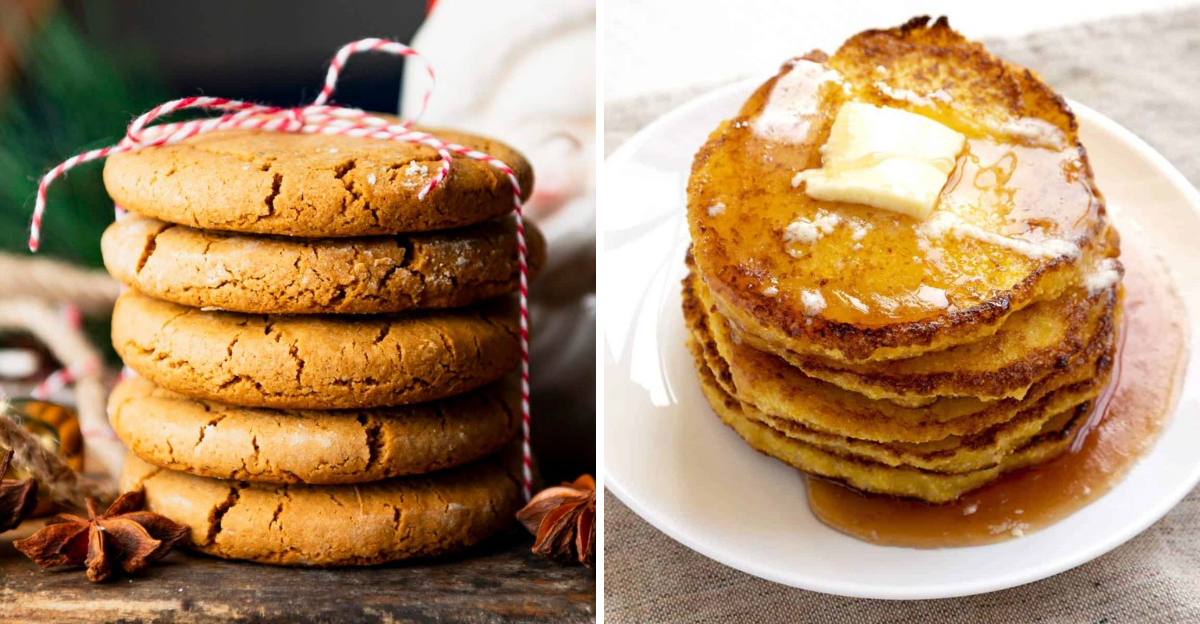
Before supermarkets and fast food, colonial Americans made do with what they could grow, hunt, or trade. These dishes were hearty, resourceful, and deeply influenced by Native American, English, and African traditions. Here are 25 foods that were common in the 13 colonies—some still beloved, others all but forgotten.
1. Johnnycakes
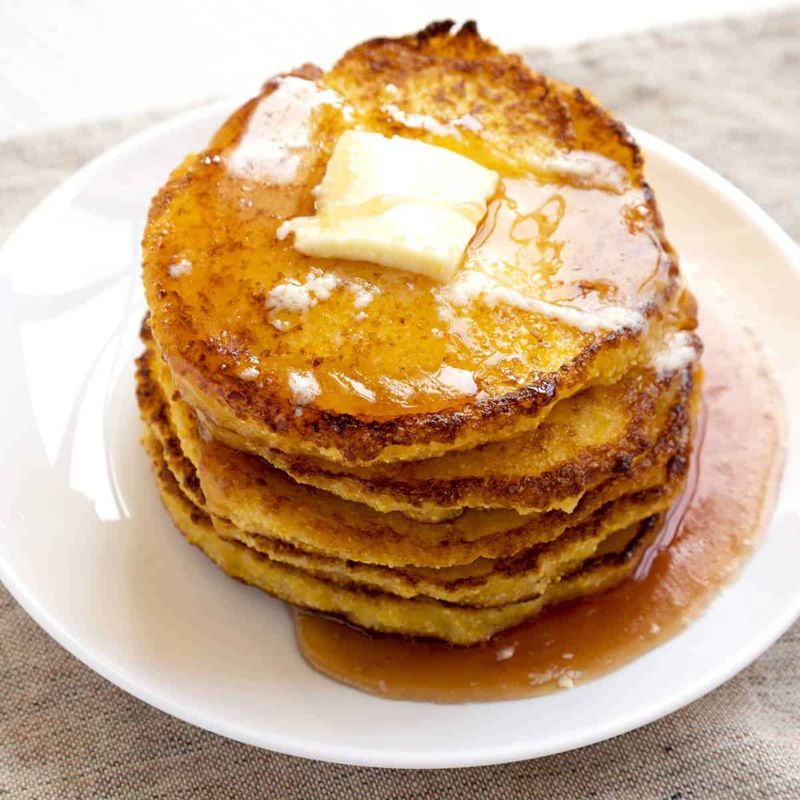
In a bustling New England kitchen, the aroma of freshly fried johnnycakes fills the air. These simple cornmeal flatbreads were a breakfast staple, cherished for their versatility and ease. Fried crisp on a griddle, they were often served with butter or honey.
Imagine a family gathered around the hearth, savoring these golden-brown delights. Each bite brought warmth on chilly mornings. Simple, yet satisfying, johnnycakes were a testament to the resourcefulness of colonial cooks. Their legacy endures, a comforting reminder of a bygone era.
Did you know? Johnnycakes have ties to Native American cooking techniques. Their legacy endures, a comforting reminder of a bygone era.
2. Indian Pudding
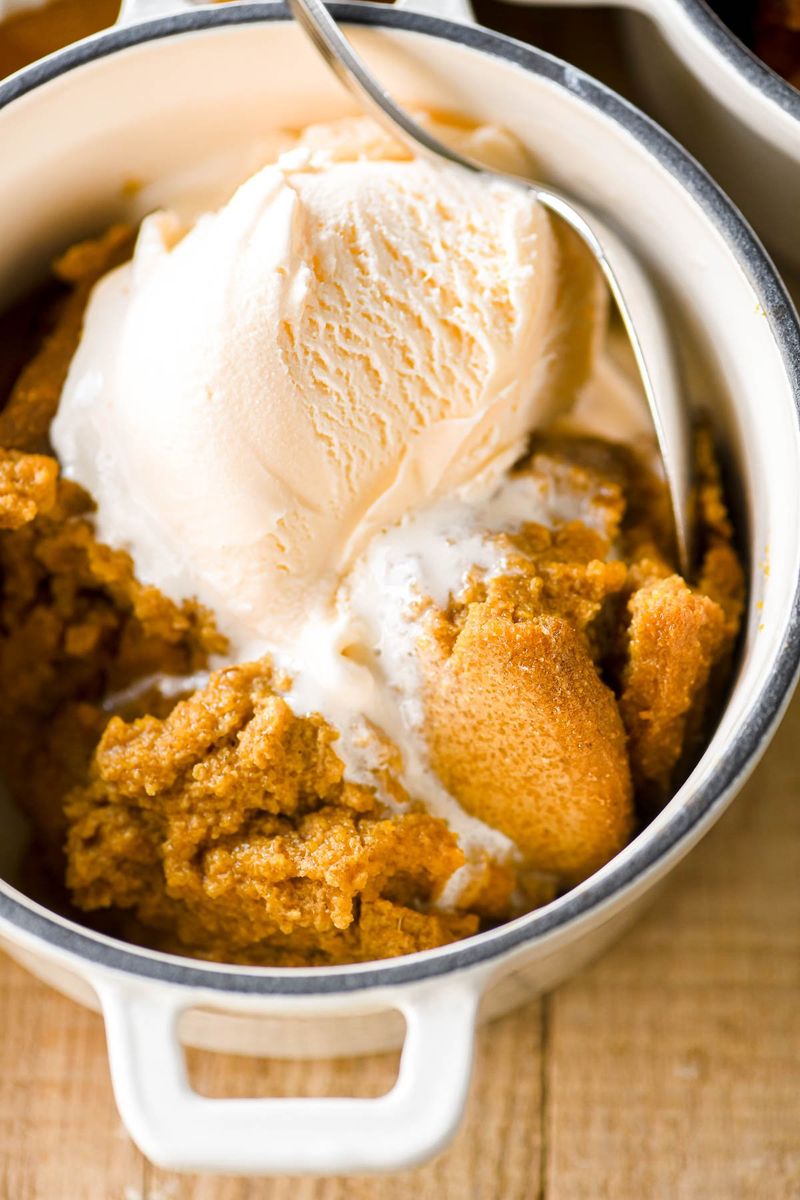
The comforting scent of spices and molasses beckons from a slow-cooked pot of Indian pudding. This warm dessert, rich in history and flavor, was a colonial favorite. Made with cornmeal and molasses, it simmered for hours, filling homes with its inviting aroma.
Imagine gathering around the hearth, eager for a taste of this creamy delight. It was a sweet finale to hearty meals, its subtle spice a nod to the blend of cultures that shaped colonial kitchens.
Fun fact: Indian pudding was an adaptation of English hasty pudding, utilizing New World ingredients.
3. Succotash
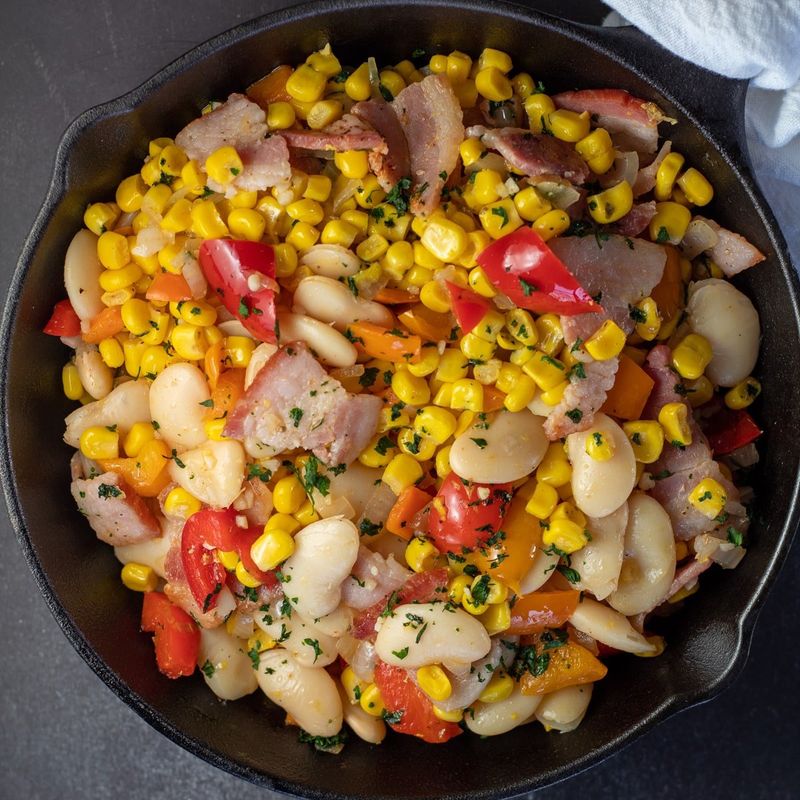
In the heart of colonial harvest, succotash graced many tables. This vibrant dish, a blend of corn and lima beans, spoke to the rich agricultural bounty of the colonies. Often stewed with butter or meat, it was a heartwarming contribution from Native American cuisine.
Picture a family sharing this colorful medley, the flavors of summer captured in each bite. Its simplicity masked the depth of tradition and resourcefulness it represented.
Did you know? Succotash was not just a side but a symbol of cooperation between colonists and Native Americans, showcasing shared agricultural knowledge.
4. Salt Pork
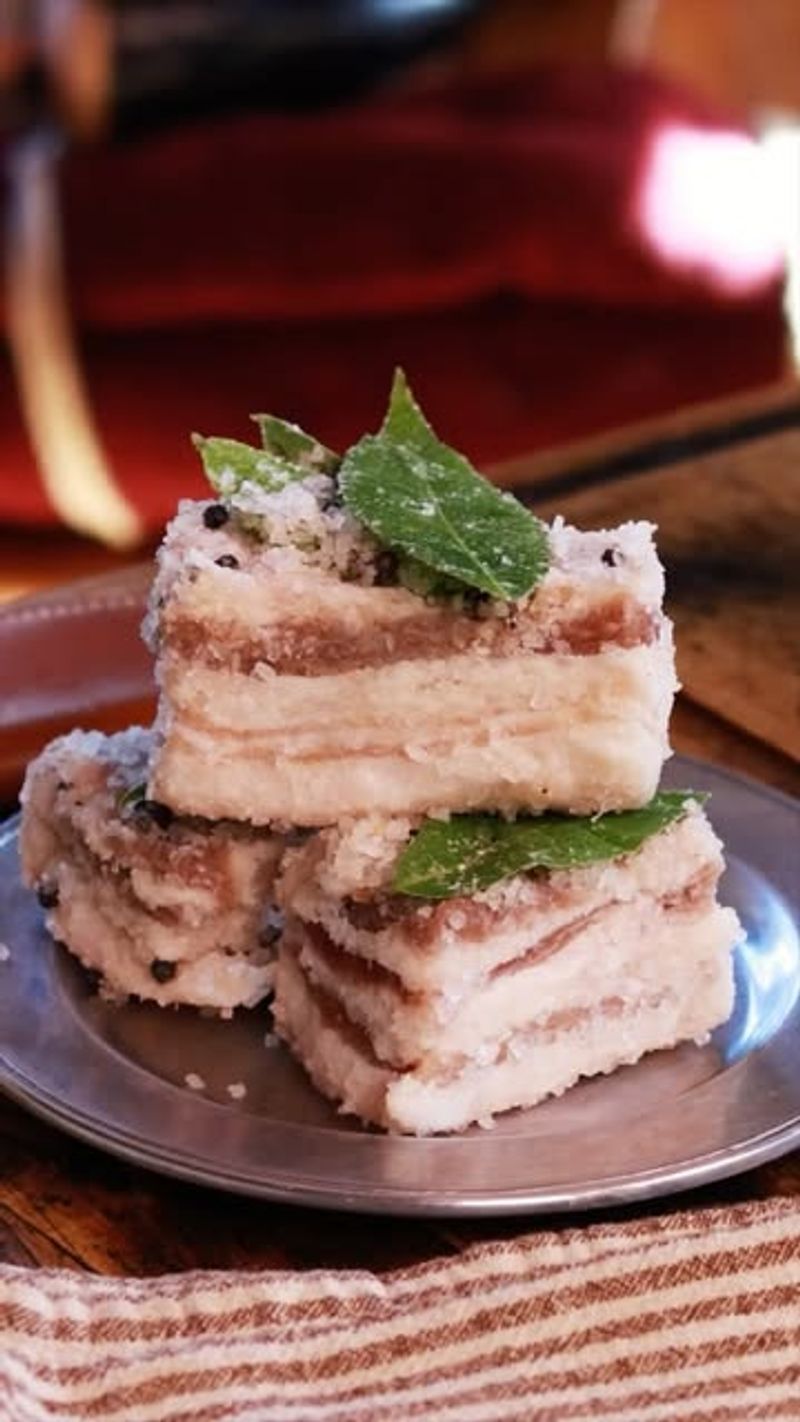
In times when fresh meat was scarce, salt pork became a colonial lifesaver. These fatty cuts, cured in salt, were essential for survival, adding flavor and sustenance to soups and stews.
Imagine the rich aroma wafting through a colonial kitchen as a pot of stew simmers over the fire, the salt pork infusing every bite with savory goodness. It was more than a meat substitute; it was a cornerstone of colonial cuisine.
Fun fact: Salt pork’s preservation method meant it could last for months, making it a valuable commodity in colonial households.
5. Hasty Pudding
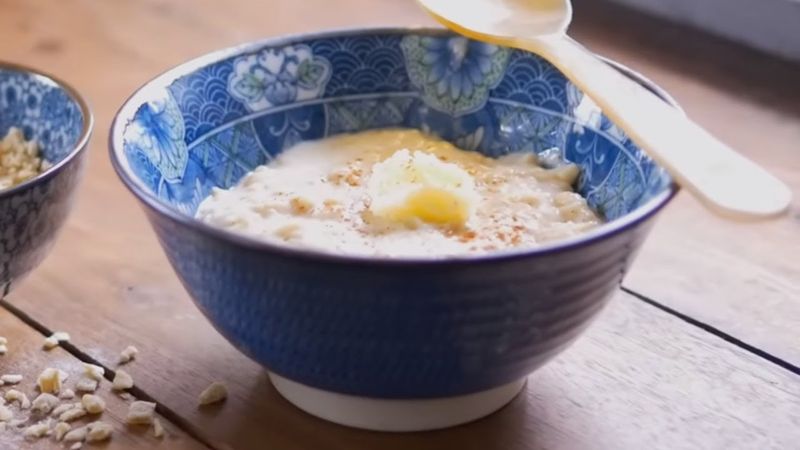
The humble hasty pudding, a staple of colonial life, was more than just a meal; it was a testament to ingenuity. Made from boiling cornmeal in milk or water, it was sometimes sweetened with molasses, transforming into a comforting porridge.
Picture a chilly morning, a family gathered around the hearth, each spoonful offering warmth and sustenance. Its simplicity was its charm, a reminder of resourcefulness in the face of scarcity.
Did you know? Hasty pudding was so beloved, it inspired a patriotic song, “Yankee Doodle,” highlighting its place in colonial culture.
6. Apple Pandowdy
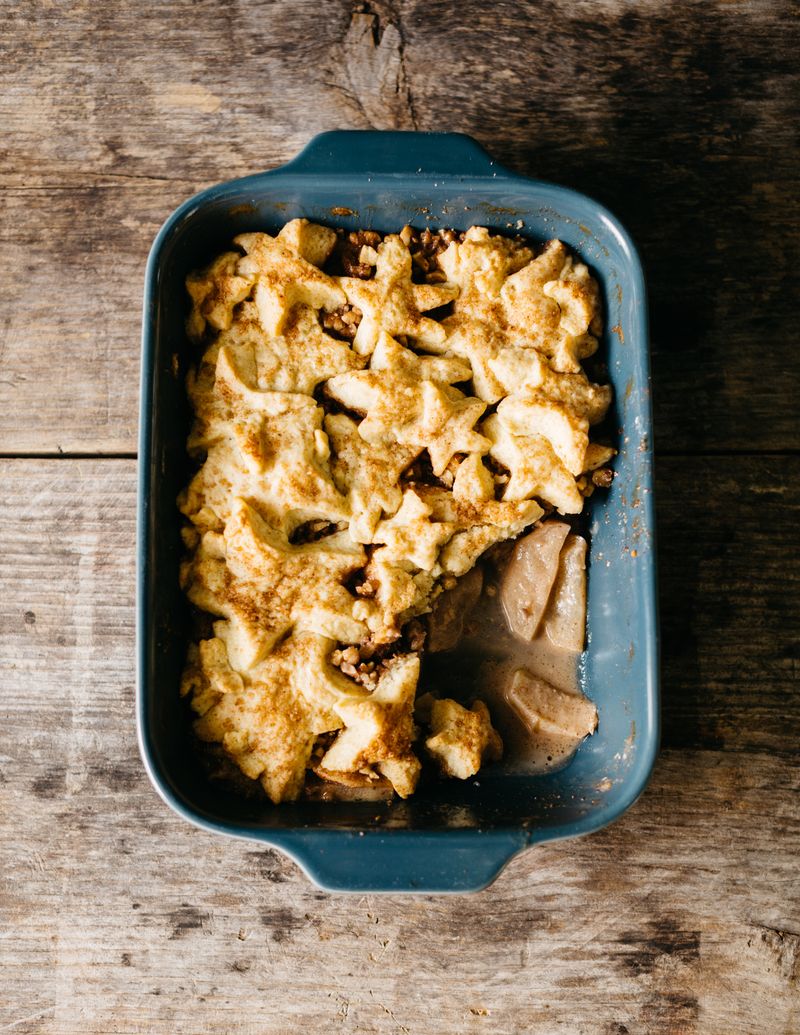
In colonial kitchens, apple pandowdy was more than dessert; it was an embrace of comfort. This rustic dish, with stewed apples and a biscuit-like topping, was easier than pie and just as rewarding.
Imagine the gentle bubbling of apples in the oven, their sweet aroma filling the air. Families gathered, eager to savor the warmth of a freshly baked pandowdy.
Fun fact: The name “pandowdy” hints at its humble origins, reflecting the practical colonial approach to using available ingredients creatively.
7. Boiled Dinner
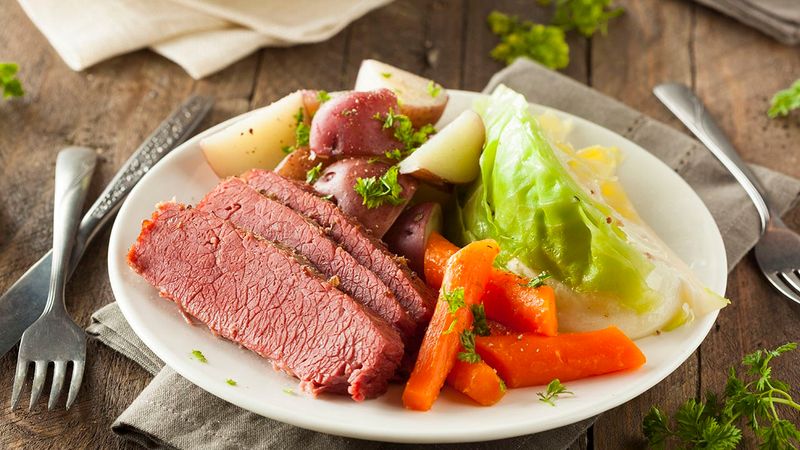
The boiled dinner, a colonial staple, was as practical as it was filling. Meat, often salt pork or beef, was boiled with root vegetables like turnips, carrots, and cabbage, creating a hearty meal.
Picture a family gathered around, ladling portions of this steaming medley onto their plates. It was a meal that brought warmth and sustenance, especially during the harsh winters.
Did you know? The boiled dinner was a precursor to the New England boiled dinner, a testament to the lasting influence of colonial culinary traditions.
8. Brown Bread
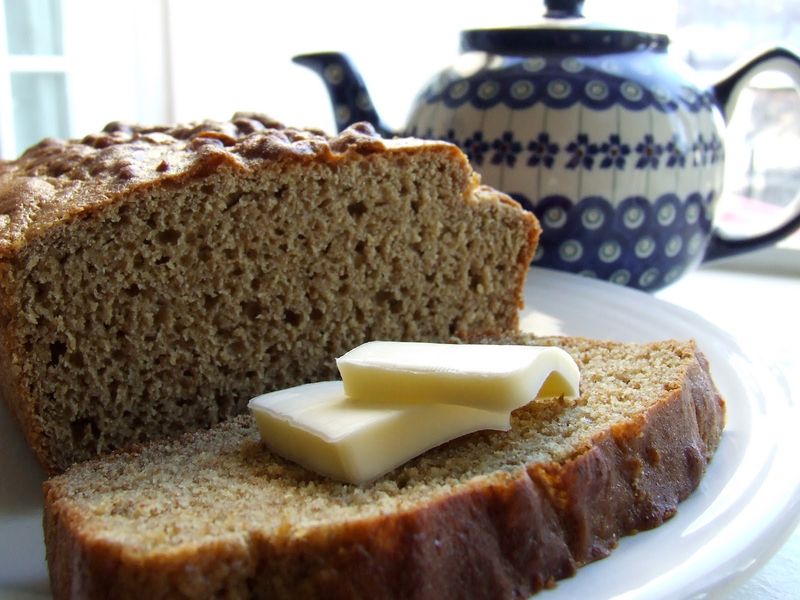
Brown bread, dense and slightly sweet, was a comforting staple in colonial homes. Made from a mix of rye, wheat, and cornmeal, it was sometimes steamed instead of baked, adding to its unique texture.
Imagine the rich aroma filling a colonial kitchen, the bread served warm alongside hearty stews or with a smear of butter. Each slice was a reminder of the resourcefulness needed to thrive in a new world.
Fun fact: The tradition of steaming brown bread lives on in New England, often enjoyed with baked beans.
9. Clam Chowder (Early Version)
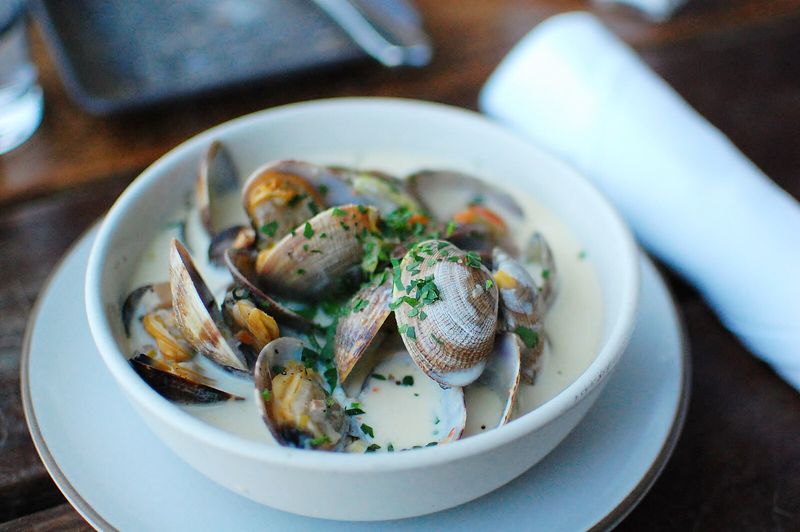
Before creamy chowders, there was the simpler, broth-based clam chowder of colonial times. Typically made with salt pork, clams, and potatoes, it warmed many a coastal New England kitchen.
Picture a fisherman returning home, the day’s catch transforming into a hearty soup on the hearth. Each spoonful offered comfort and sustenance, the flavors of the sea mingling with the smokiness of salt pork.
Did you know? This early chowder laid the foundation for the creamy versions we enjoy today, a testament to the enduring appeal of this beloved dish.
10. Hominy
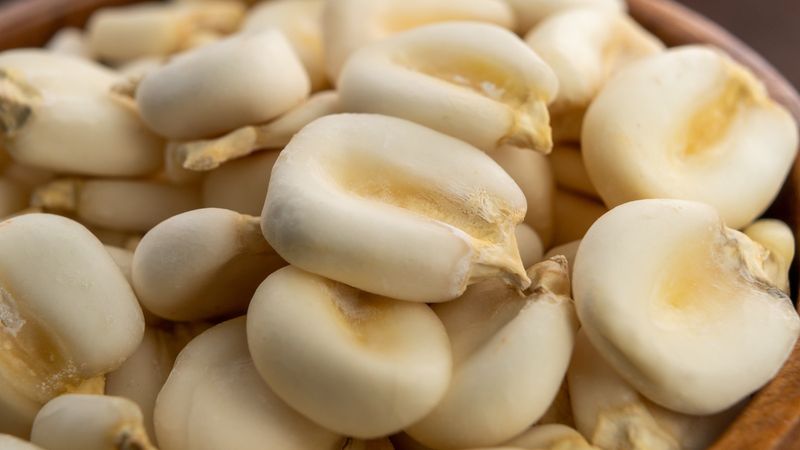
Hominy, with its soft, puffy kernels, was a colonial staple with deep roots in Native American agriculture. Corn kernels soaked in lye water became a versatile base for many dishes.
Imagine the gentle simmering of hominy on the stove, its unique texture offering a satisfying chew. Whether eaten as-is or ground into grits, it was a testament to the ingenuity of early American cooks.
Fun fact: Hominy’s preparation method increased nutritional value, making it an essential food source during lean times.
11. Fried Fish Cakes
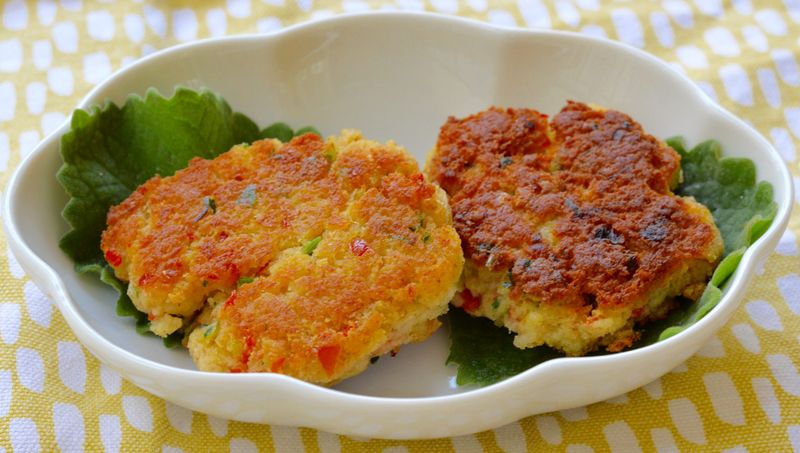
Fried fish cakes were a clever way to stretch salted or leftover fish. Mixed with mashed potatoes and herbs, these patties offered a savory taste of the sea.
Picture a bustling kitchen, the sound of sizzling fish cakes filling the air. Each bite was a testament to the resourcefulness and creativity of colonial cooks, turning simple ingredients into something delightful.
Did you know? Fish cakes were not just a meal; they were a symbol of thrift, reflecting a time when nothing went to waste.
12. Mush and Milk
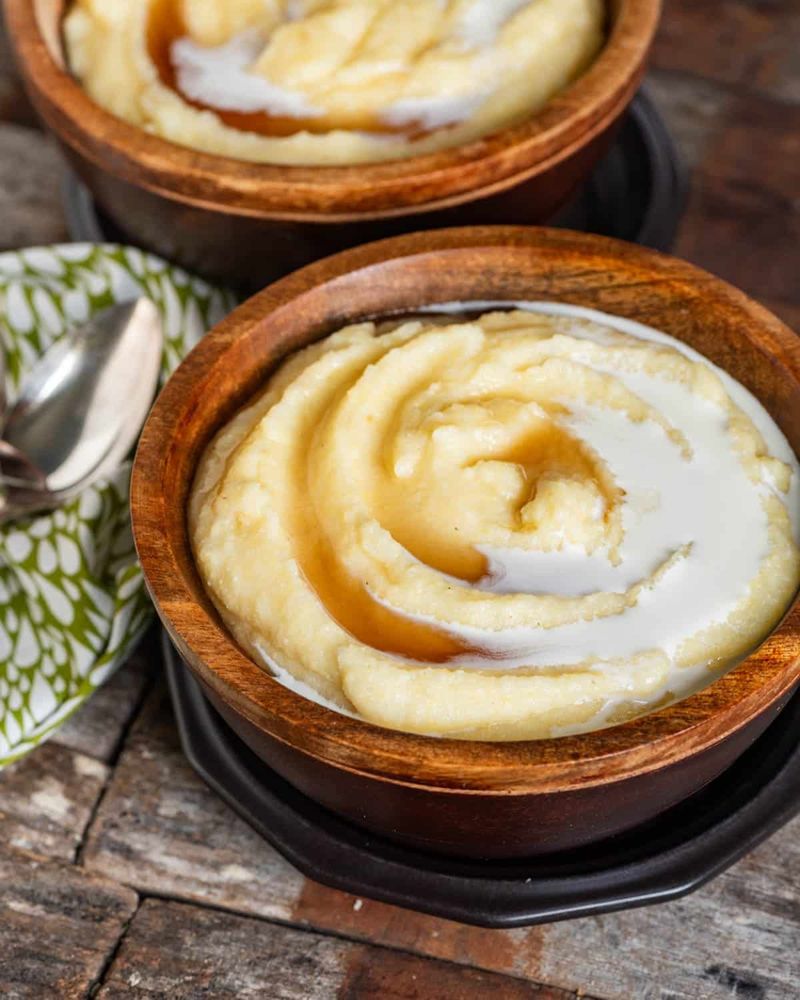
The simplicity of mush and milk belies its comforting allure. Cooked cornmeal mush, sliced and served with cold milk poured over, was a common colonial breakfast or supper.
Imagine waking to the gentle clinking of bowls, the morning sun casting a warm glow. This humble meal offered nourishment and solace, a reminder of simpler times.
Fun fact: Mush and milk was a favorite of many, including Thomas Jefferson, who appreciated its straightforward appeal during his time.
13. Turnip Greens
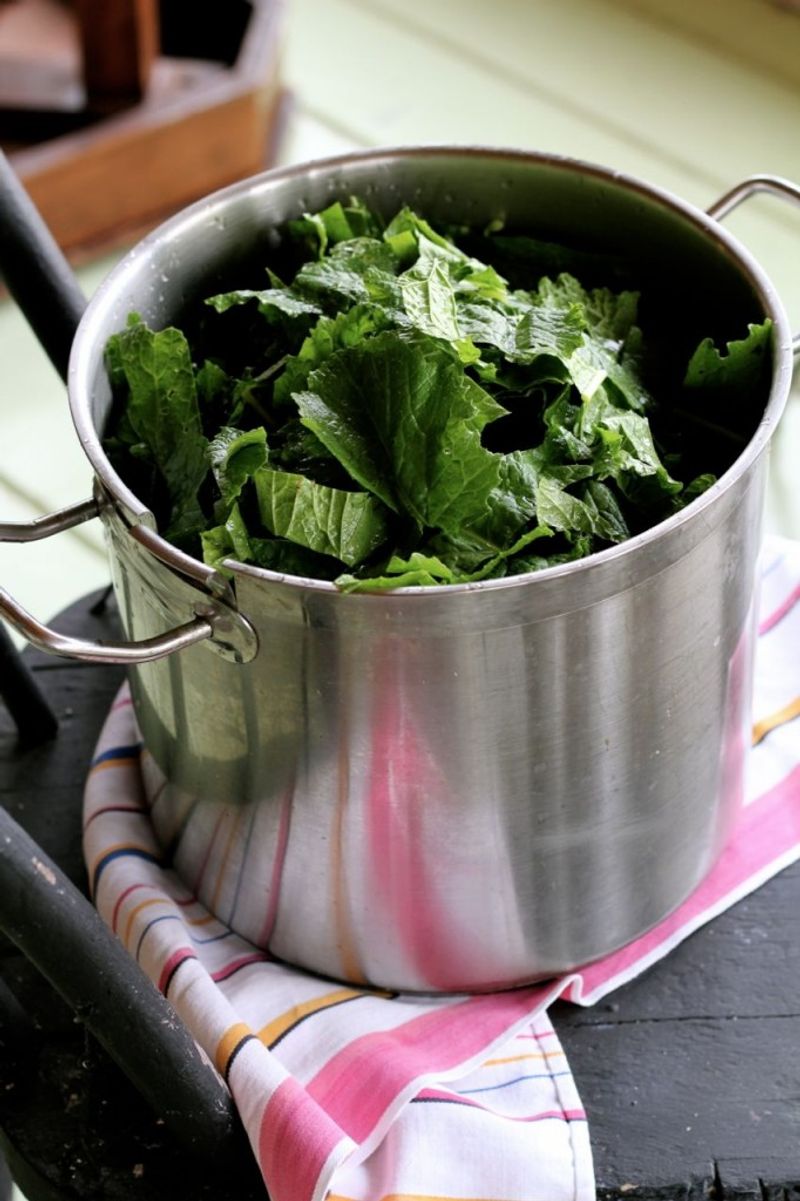
In a world where nothing went to waste, turnip greens were a valuable green addition to the colonial diet. Boiled and seasoned, often with vinegar or pork fat, they brought a burst of flavor to the table.
Picture a family gathered, savoring the simple pleasures of a meal that celebrated every part of the harvest. These greens were more than just a side; they were a testament to the resourcefulness of colonial cooks.
Did you know? Turnip greens’ peppery flavor added a delightful contrast to heartier dishes like stews and roasts.
14. Goose or Duck
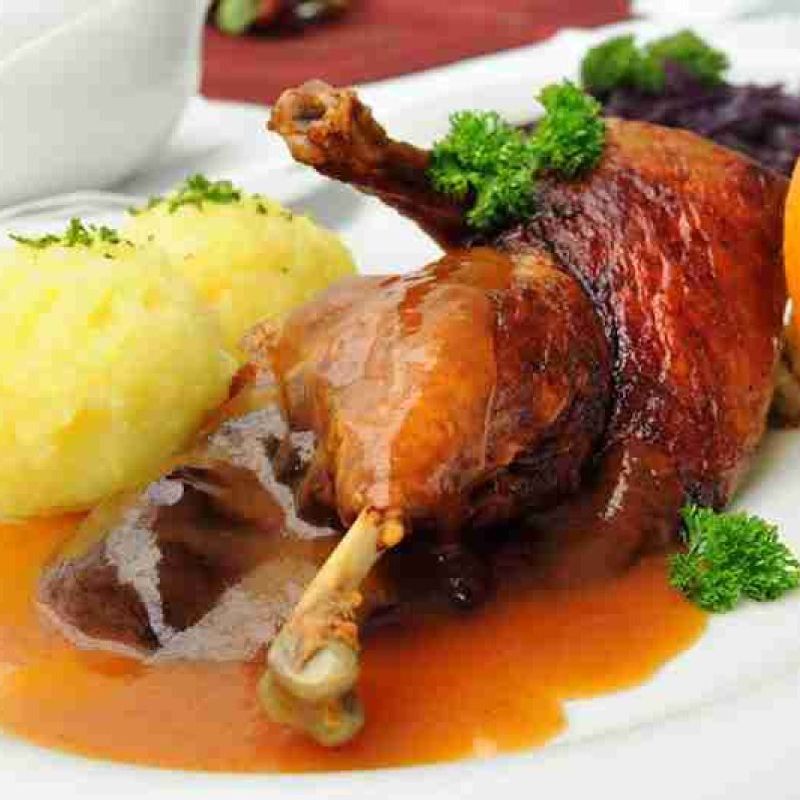
In colonial times, wild fowl like goose and duck were prized dishes, especially for holidays or special occasions. Roasted with herbs and root vegetables, they brought a touch of luxury to the table.
Imagine the anticipation of a feast, the rich aroma of roasting meat filling the air. These dishes were more than just meals; they were celebrations of abundance and hospitality.
Fun fact: Goose was often the centerpiece of festive meals, symbolizing prosperity and the bounty of the land.
15. Baked Beans
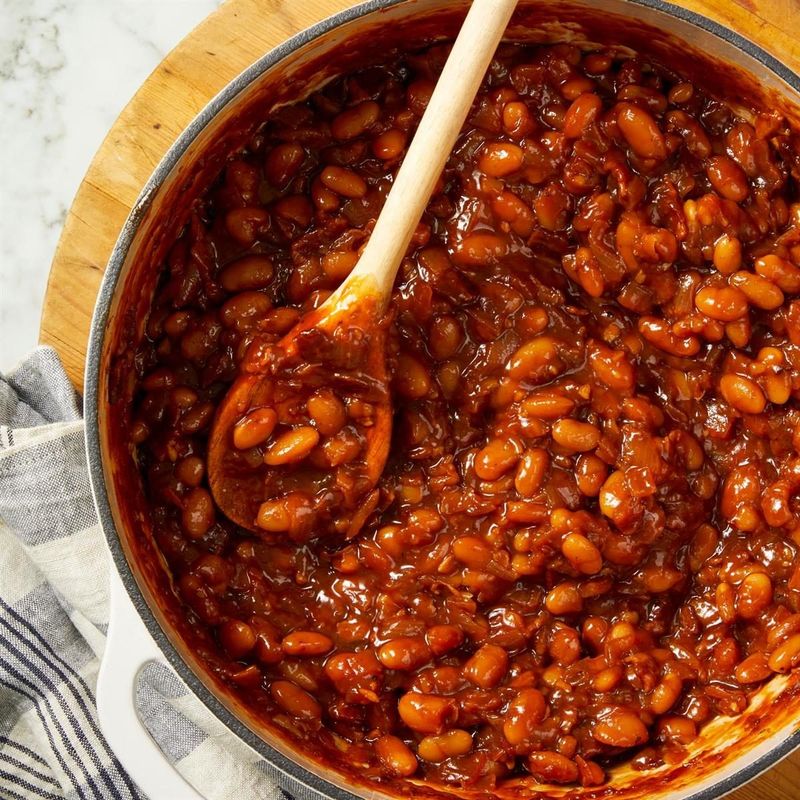
The slow-cooked sweetness of baked beans was a colonial favorite, especially in the Northeast. With molasses and salt pork, they offered a comforting taste of home.
Picture a cozy kitchen, the aroma of molasses and beans mingling with the warmth of the hearth. This dish was more than sustenance; it was a reminder of community and shared meals.
Did you know? Baked beans’ sweetness was a nod to the Caribbean trade, which brought molasses to the colonies, enriching their culinary repertoire.
16. Pumpkin Stew
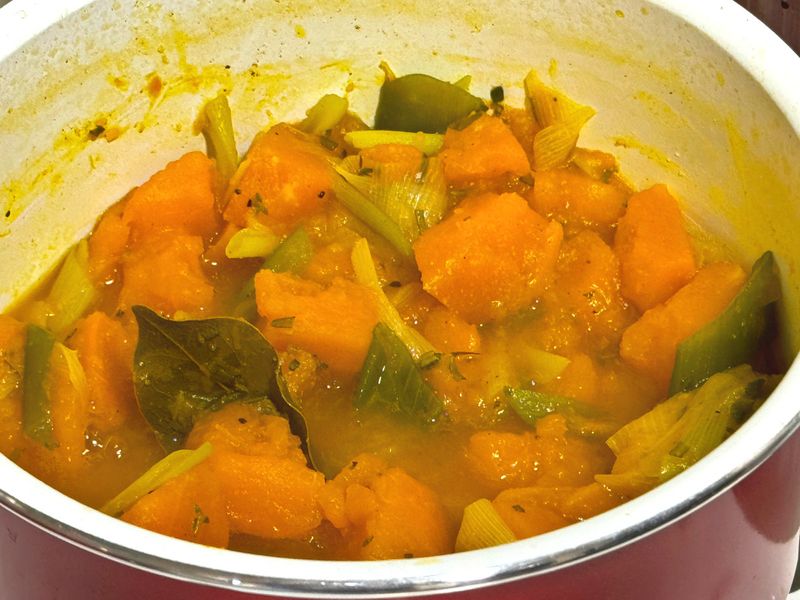
The arrival of autumn in the colonies brought with it the comforting aroma of pumpkin stew. This hearty dish, with chunks of pumpkin and whatever vegetables were on hand, was a staple of the season.
Imagine the vibrant orange hue of the stew bubbling on the hearth, a meal that celebrated the harvest’s bounty. It was more than just a stew; it was a tribute to the ingenuity of colonial cooks.
Fun fact: Pumpkins were so integral to colonial life, they were used in everything from stews to pies, a true symbol of the New World.
17. Rye and Injun Bread
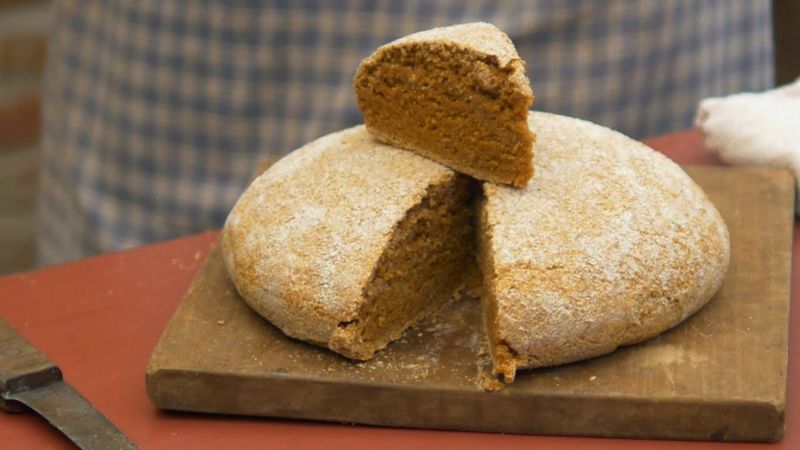
In colonial kitchens, rye and injun bread was a staple that reflected both necessity and creativity. Made with rye flour and cornmeal, this dense bread offered sustenance and warmth.
Picture the comforting aroma as a loaf is pulled from the oven, its crusty exterior hinting at the heartiness within. This bread was a testament to the resourcefulness of colonial cooks.
Did you know? The name “injun” is derived from “Indian,” acknowledging the Native American influence on colonial grain use.
18. Syllabub
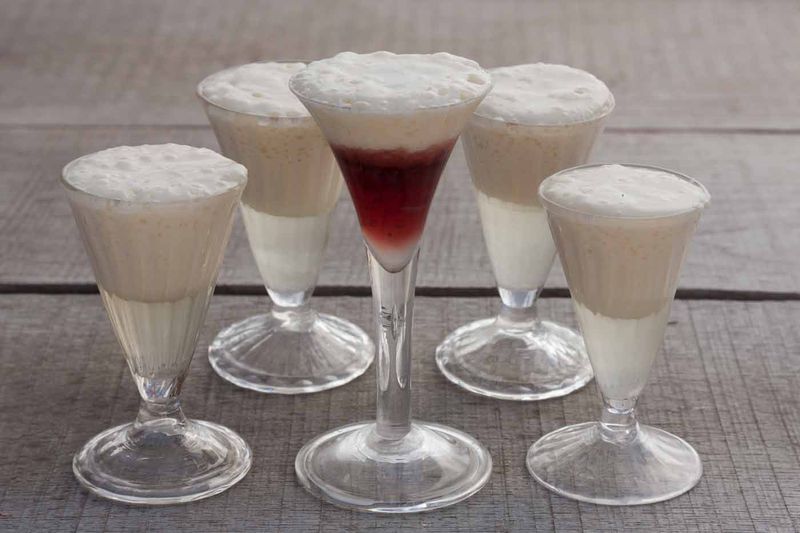
Syllabub, a frothy delight of cream mixed with wine or cider, was a colonial dessert prized for its light and tangy taste. Often served cold, it brought a touch of elegance to any meal.
Imagine a colonial gathering, laughter filling the room as guests savored this airy treat. Each sip was a celebration of simple pleasures, the flavors mingling to create a refreshing finale.
Fun fact: Syllabub’s popularity crossed the Atlantic, delighting both English and colonial palates alike with its charm.
19. Cornbread
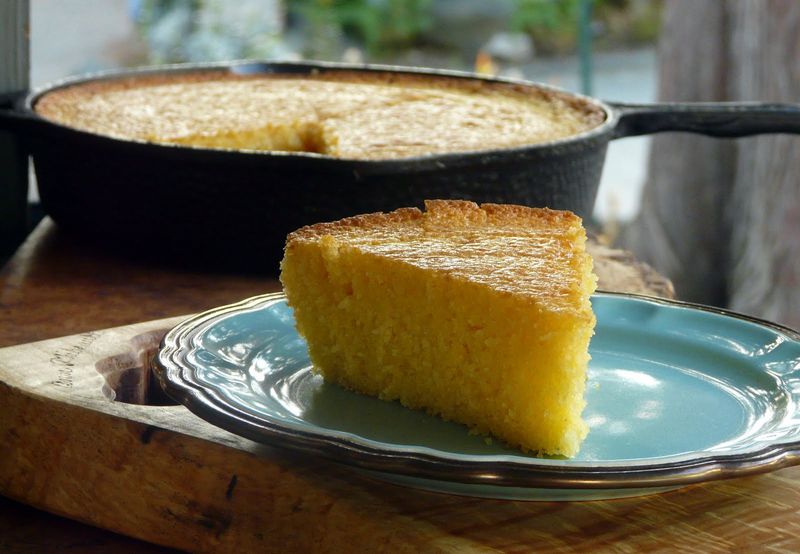
Cornbread, with its golden hue, was a versatile favorite in colonial kitchens. Easy to bake and delicious, it accompanied soups, stews, or was simply enjoyed with honey.
Picture the aroma filling a room as a loaf is pulled from the oven, its warmth inviting and comforting. Cornbread was more than just a side; it was a staple of daily life.
Did you know? Cornbread’s simplicity belied its importance, serving as a bridge between Native American and colonial culinary traditions.
20. Molasses Cookies
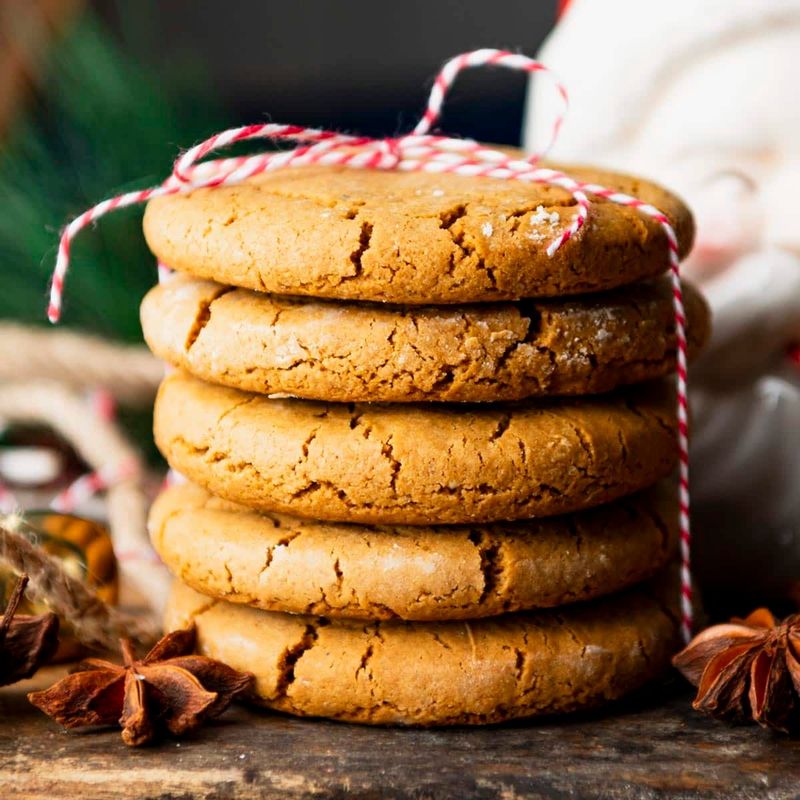
In the sweet world of colonial confections, molasses cookies reigned supreme. Spiced and soft, they were a treat made possible by the Caribbean trade, which brought molasses to the colonies.
Imagine the comforting scent of spices and baking cookies filling a colonial kitchen. Each bite was a taste of warmth and sweetness, a small indulgence in a world of simplicity.
Fun fact: Molasses cookies were not only delicious but also a symbol of the interconnectedness of the colonial world through trade.
21. Venison
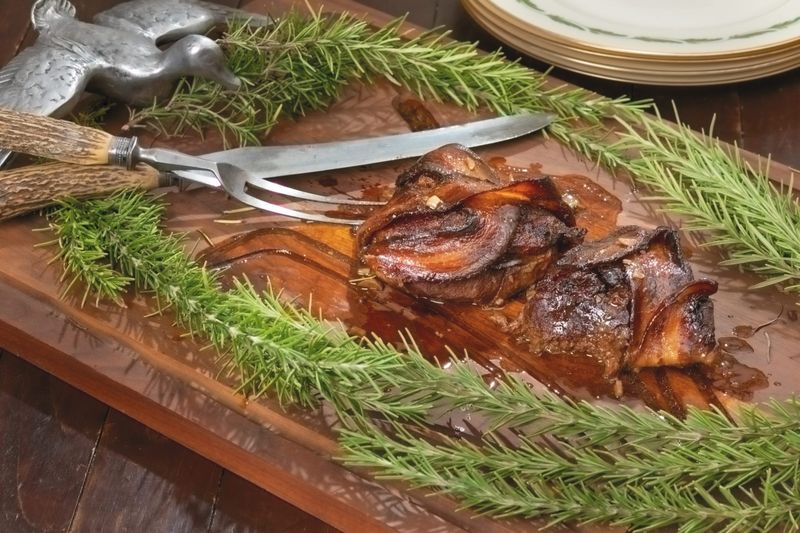
Venison, hunted regularly in rural areas, was a prized source of lean, flavorful meat. Whether roasted or made into jerky, it was a staple in colonial diets.
Picture a colonial gathering, the rich aroma of roasting venison filling the air. This meat was not just sustenance; it was a celebration of the hunt and the abundance of the land.
Did you know? Venison’s popularity was due in part to the vast forests teeming with deer, offering a reliable food source for colonists.
22. Cider
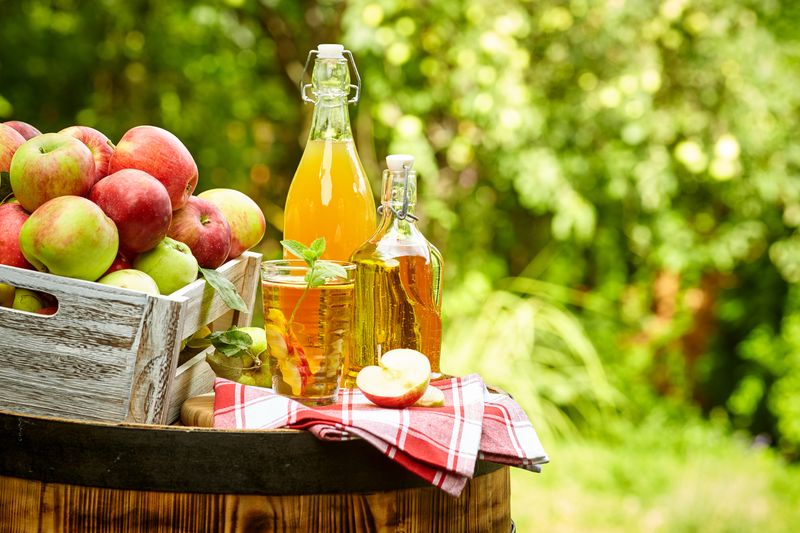
Cider, whether alcoholic or sweet, was the colonial beverage of choice. Safer than water and made from plentiful apples, it was a staple in colonial households.
Imagine the refreshing taste of cider on a warm day, a family gathered around, enjoying its crisp flavors. This drink was more than just a refreshment; it was a symbol of colonial ingenuity and abundance.
Did you know? Cider’s popularity was so widespread that it was often used in cooking, adding a unique flavor to various dishes.
23. Pickled Vegetables
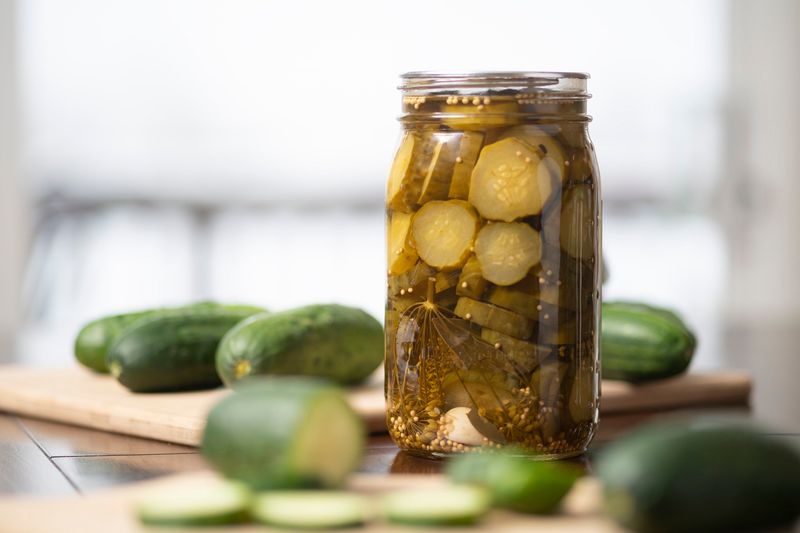
In colonial pantries, pickled vegetables were a necessity, a way to preserve the harvest for leaner times. From cucumbers to beets, these tangy treats added zest to meals.
Picture a cellar lined with jars, the vibrant colors of pickled vegetables a reminder of summer’s bounty. They were more than just a side; they were a testament to the creativity and foresight of colonial cooks.
Fun fact: Even watermelon rinds were pickled, showcasing the resourcefulness in ensuring nothing went to waste.
24. Chicken Pie
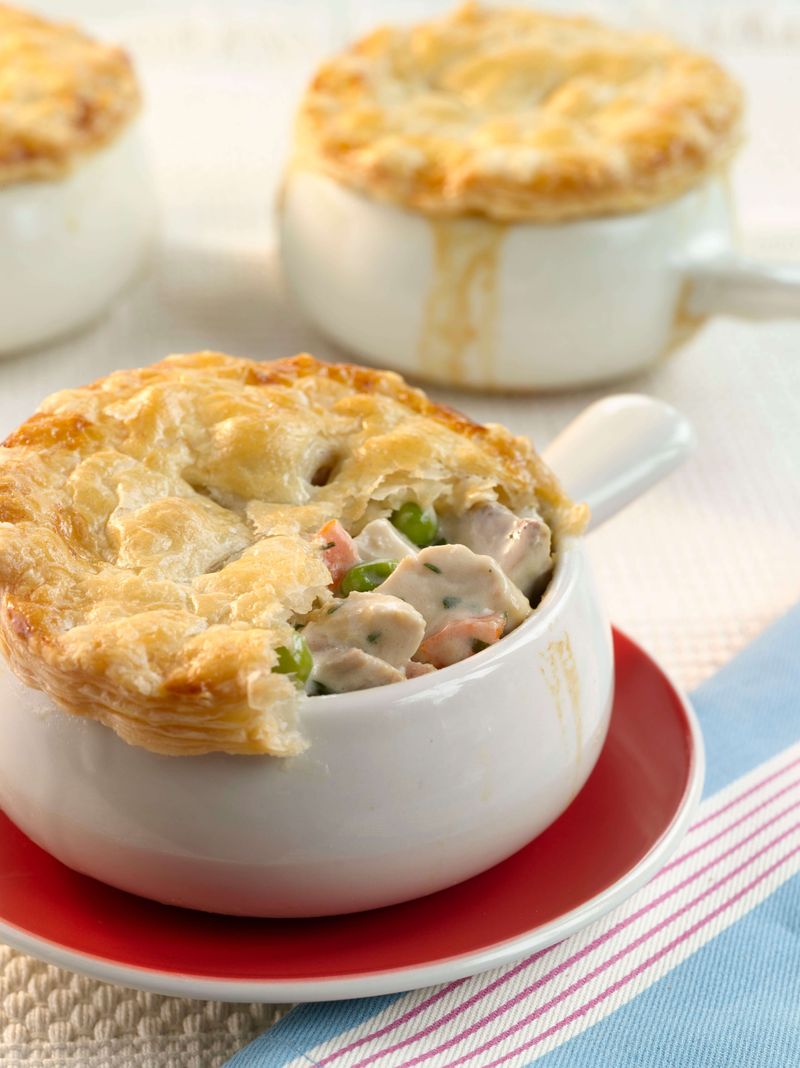
Chicken pie, the forerunner of today’s pot pie, was a beloved colonial dish. With meat and vegetables baked into a thick crust, it was a meal that offered warmth and satisfaction.
Imagine the anticipation as a pie is pulled from the oven, its golden crust encasing a savory filling. This dish was more than just a meal; it was a reminder of home and hearth.
Did you know? Chicken pie was often served at gatherings, symbolizing hospitality and the bounty of colonial kitchens.
25. Scrapple
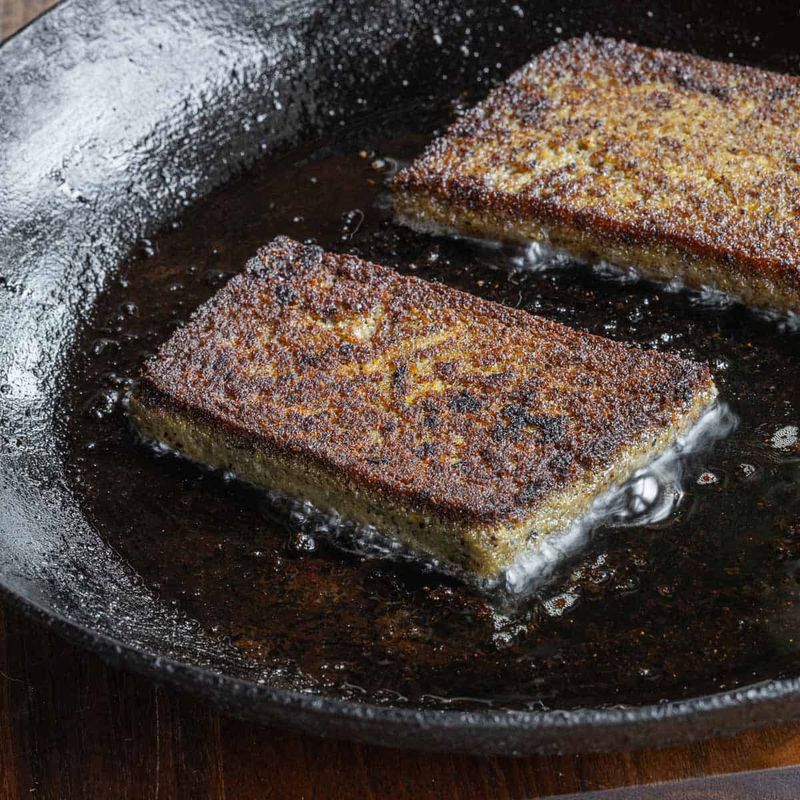
In the Mid-Atlantic, scrapple was a hearty favorite, made from pork scraps, cornmeal, and spices. Cooked into a loaf and sliced for frying, it was a practical and satisfying dish.
Picture the sizzling of scrapple in a pan, its crispy exterior giving way to a savory interior. This dish was more than just a meal; it was a symbol of thrift and ingenuity.
Did you know? Scrapple’s origins can be traced to Pennsylvania Dutch cuisine, reflecting a blend of cultures that enriched colonial culinary traditions.
